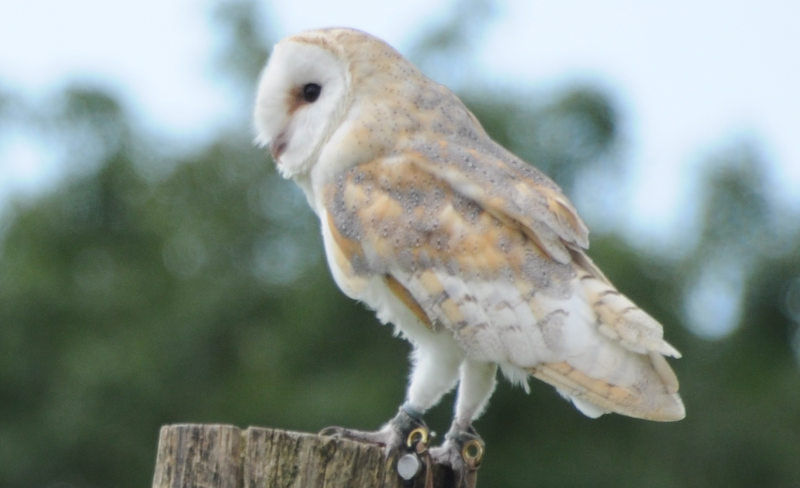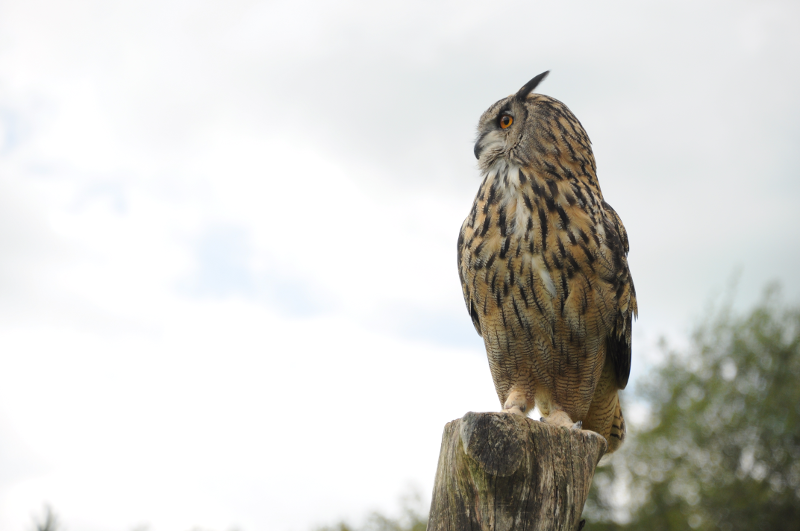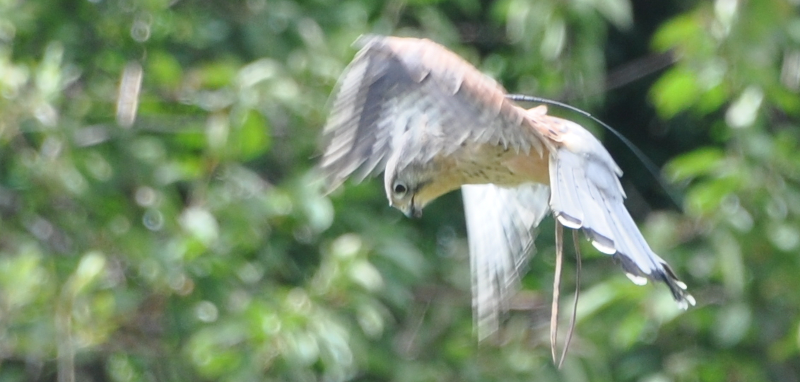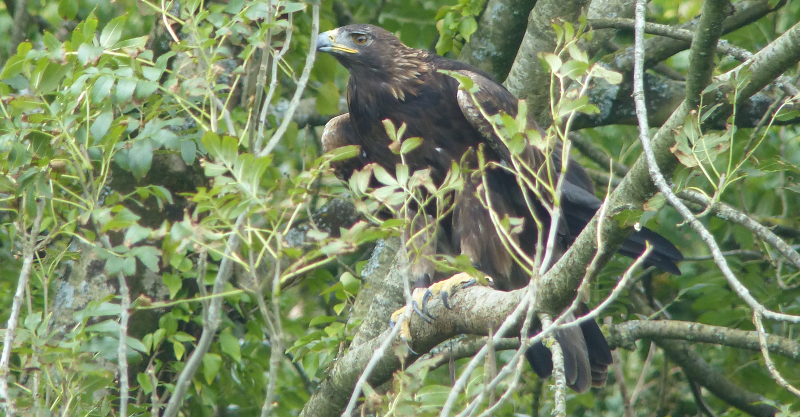Average Birding

Mid-Wales part one: Llandovery
The first in a series of posts detailing a trip to mid-Wales in August/September 2020.
Context
All of our research says that Mid-Wales is best visited in the Spring. I find one older book that suggests Flycatchers are almost the default bird in some forests of the region at that time. Why try in late August/early September then?
Well, there's a pandemic on, and during the Spring, a full on lockdown put a swift end to any idea of a trip at that time of year. Perhaps we can catch up with some of these species as they begin their journey South? Neither average birder has had more than a couple of days off since March in any case, so even if we spend two weeks in Wales walking around bird-free forests and hillsides we should probably get out there.
Llandovery
Will be our base of operations for our first five days, from August 28th 'til September 1st. We're staying in the Castle Hotel, which is...functional . Our room also provides an excellent place from which to listen to the nearby bustling livestock market. We've never seen so many sheep change hands.
Primarily though we're wanting to explore to the North of here, up the River Towy; there are two reserves in particular we're hoping to visit - the RSPB's Gwenffrwd-Dinas reserve, and Alt Rhyd-y-groes NNR nearby. In between we might have an explore of some walks from Llandovery itself.
Gwenffrwd-Dinas
Heading up towards Llyn Brianne from Llandovery is effectively travelling from the edge of nowhere into the middle of nowhere. As such, we're expecting the roads to be of the hairy single track variety, full of locals doing 90mph because they've been doing it since birth.
Thankfully, our expectations are off. Other drivers seem, mostly, to be being as careful as we are, and the road to Gwenffrwd in particular is mostly single carriageway with only occasional squeezes where more care is required. We guess the continued maintenance on the dam at the top means the road up there also gets well looked after.

We make it up here twice; first a solo visit from AB1 (AB2 hasn't quite left work behind), and a second in tandem.

Arrival at Gwenffrwd is punctuated by some excellent interpretive panels and a boardwalk. Two of our favourite things. The boardwalk threads its way through a wet woodland, with a branch of the Towy off ~100m or so to the right of it (as you walk from the car park into the reserve).
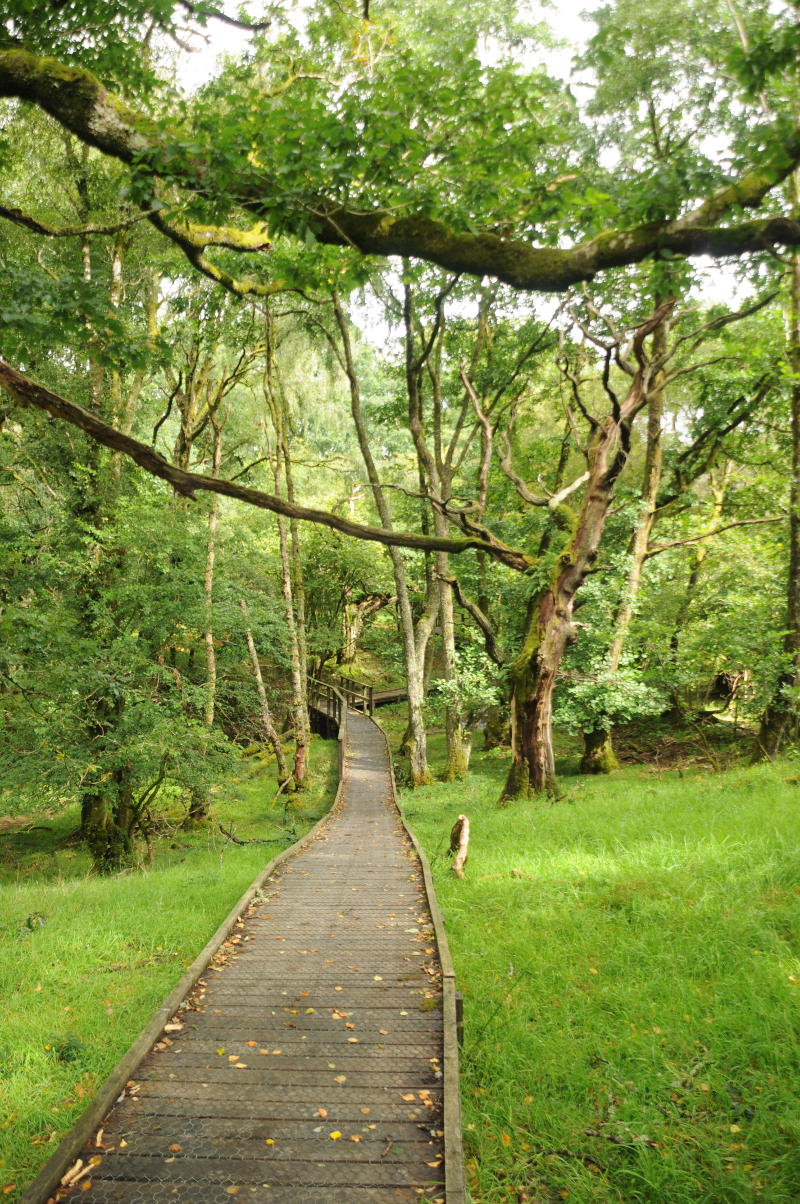
The boardwalk is delightful - alive with birdsong with a backdrop of trickling water. We had four very different experiences here. First time , everything was a Chaffinch. On the way back, Treecreepers, everywhere . Third: dead as a doornail. Fourth: huge woodland flock of everything - all four common tit varieties, Goldcrest, Nuthatch, Treecreeper, Great-spotted Woodpecker.
On leaving the boardwalk, Covid guidelines demand the circular walk be attempted anti-clockwise (yes, really). This takes us alongside the river - which has got Dipper written all over it. Or would do, if those people would keep their dog out of it. Oh well. Everyone's got to be somewhere.
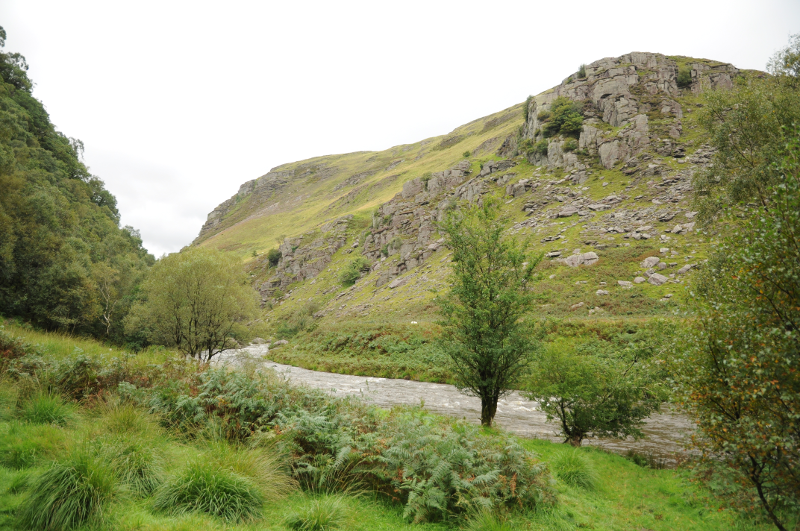
After a couple of hundred metres of being followed by a muddy grass path, the river has had enough, and dives downhill via some pretty impressive rapids. The path holds on to the edge, but is hard work - we spend more time keeping our feet than looking for Dippers in this section, with only a few stops to admire the scenery behind and above the rapids. The woods to the left could well be full of life, but our usual mechanism for detecting them is drowned up by the roar of the river.
Roughly halfway along the rapids part of the walk, there's an option to climb up to visit the Ogof Twm Sion Cati - I ignore this on our first visit, but completionist AB2 insists on a visit the second time around. It's a reasonably decent hideout, and the climb probably earns you a snack, so why not?
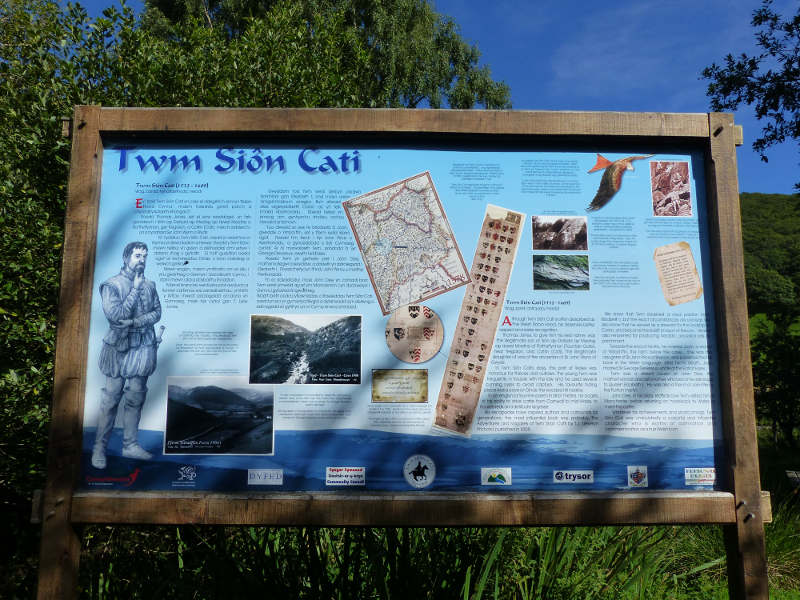
After a few more minutes of careful foot placement, the path starts to move away from the river - irritatingly, just as it starts to calm enough to be Dipper-friendly again. In particular, the section where the two Towy branches join looks like it could be a Dipper hotspot - the sanctioned path has no intention of offering us a view though.
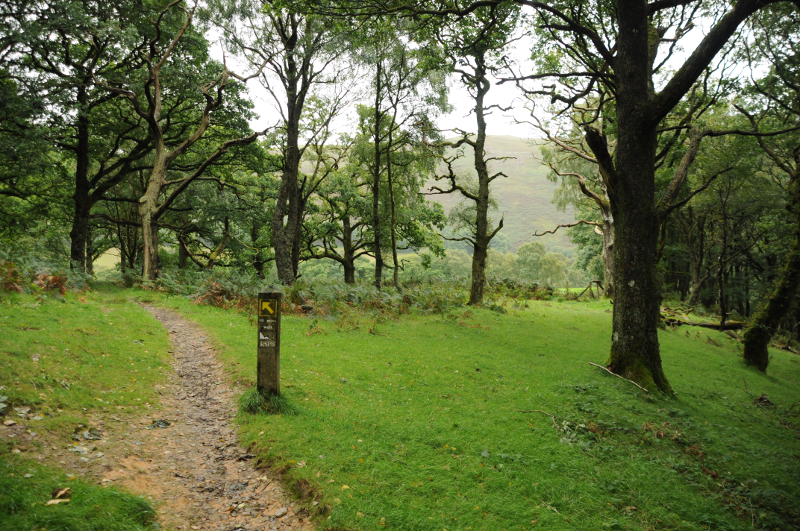
As the sound of the river begins to fade, there's a bench, and a fence, and by goodness it's the most Redstarty place you've ever seen in your life. Tellingly, though, no sign of Redstart is seen on either occasion. There is an ideal bench for a sit down and a snack (already? -Ed), though.
The path turns a corner at this point and pivots away from the river entirely. We're now in rich Oak woodland. We found it full of Song Thrush, Wren, Nuthatch and Treecreeper.
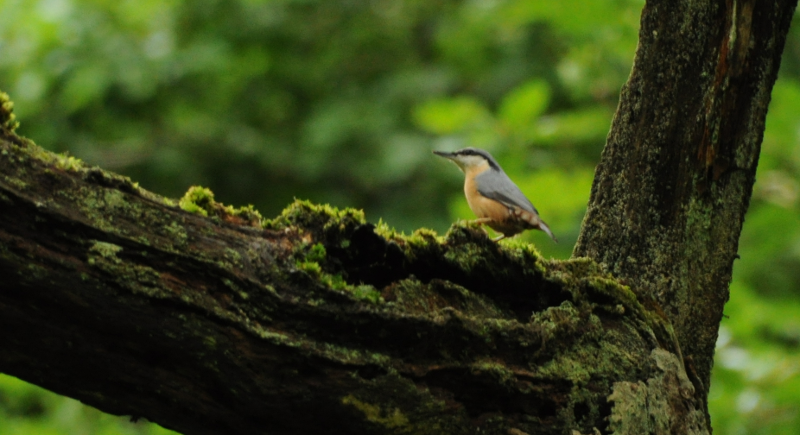
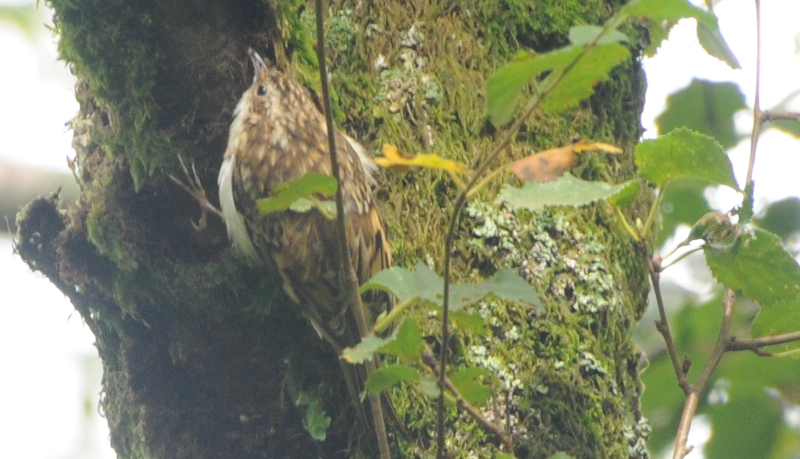
After a short walk, the path starts to approach the access road. The RSPB map marks the road here as featuring parking; we wouldn't recommend it unless the main car park is full; it's not much more than an enlarged passing place.
A tiny watercourse flows from the road to the Towy off to our right that looks Dipper-tastic but is, again, free of Dippers. We give up after a while and continue on our circuit.
The next arc-section has a couple of dead trees blocking the way; not a problem, we think, until giant invisible brambles grab at both of us as we attempt to circumvent them. Much swearing follows. A Nuthatch joins in from a tree somewhere to our left. At this point the path is tracing the woodland's edge, and there are nice views across the road to the hills opposite. There are some big birds up near the tops - one or two Ravens enjoying a gronk and a Buzzard or two trying not to look bothered.

The path cuts back into the woodland just in time to complete its circuit and deliver us back to the boardwalk. Delightful reserve. Looking forward to visiting it when its specialties are a bit more visible (I suspect we're going to be saying that a lot).
Oh, and before moving on - don't leave without visiting the tiny church next door. Quaint, and full of even more birdlife; we found Nuthatches foraging on the floor, another Great-spotted Woodpecker and plenty more.
Allt Rhyd y Groes
We had real difficulty finding any documentation on this reserve at all . This page on the First Nature website is pretty good. This page on the Natural Resources website isn't bad either. But neither have much of a trail map!
We try to follow the directions from the First Nature website. We do not succeed. We try to park on the far side of the wrong bridge, and immediately anger a very small dog. There is much better parking on the other side of the bridge, so we drop the car there instead. For future explorers, here's an exact pointer.
We cross the bridge and follow the single track round around - it's a pleasant 4 or 5km walk to the reserve from there that follows the path of the river. On our left we have delightful Oak woodland with occasional bits of field, and to our right, intermittently fabulous view of the river.
We pick up a smart-looking Male Redstart in one of the field/woodland boundaries on the left. He hangs about on a fencepost just long enough for us to consider moving for a camera, and then darts back into the woodland never to be found again.
As we approach the reserve the road hews ever closer to the river, and then crosses it just as the reserve track veers uphill. We realise, belatedly , that it's this bridge we were supposed to drive to and cross - there are several parking opportunities on the other side.
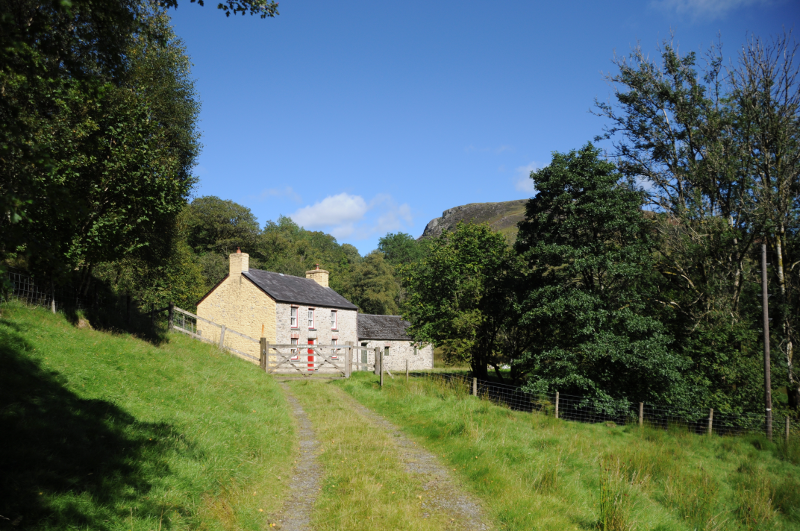
The path leaving the road takes the walk from pleasant to full on delightful, and as we pass the old house at the border of the reserve we realise we won't mind too much if that Redstart is the only thing we see.
We work our way past the house and finally a sign tells us we have made it to the reserve proper. We'll try the slightly longer path that zigzags up the hillside, then we'll see if we can use footpaths from the OS map to link up to the shorter one.
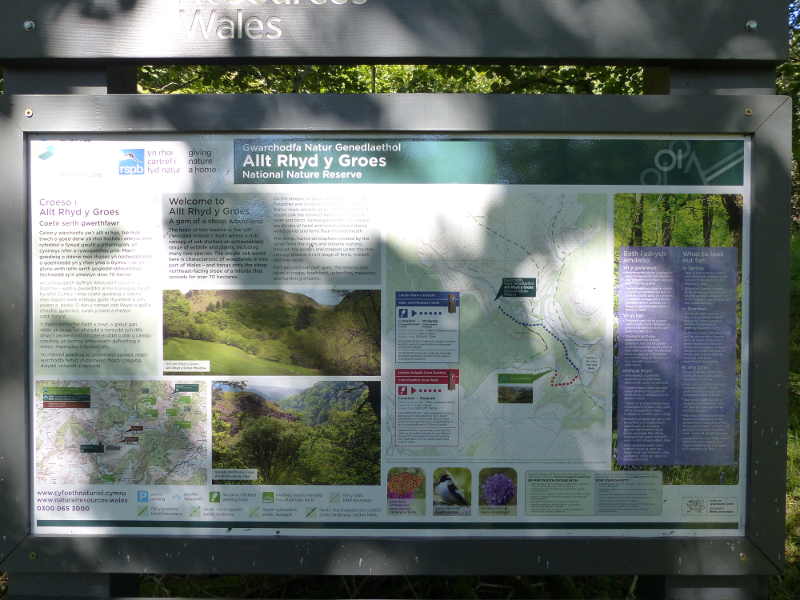
Just beyond the sign we start seeing bird boxes; we guess for Pied Flycatchers. It's remarkable how near the path they are; what an experience it must be to come here in the Spring! The woodland as we find it now is quiet but beautiful, and the views over the valley make up for the lack of obvious avian activity.
This path is not for the faint-hearted - there's a tricky crossing of a tiny stream that involves a hand rail and quite a lot of care. Once you're across there, the gradient of the zigzag path is also pretty aggressive.
Once the gradient starts to ease, the woodland thins too, going from shady Oak to much sunnier scrub. The path has clearly not been heavily walked for some time, and we have to fight our way through quite a lot of foliage, and even more flies. It's a relief as the landscape changes again into what we guess is a commercially managed forest and the flies buzz off.

Here's where we want to improvise a route back to the other path. Our immediate hopes of a quick forest cut are prevented by the forest being rather too thick (and wet!). We continue through the forest until the road heads out onto open moorland, instead. Here our map reckons a track should take us down to the end of the other reserve trail.

There's definitely a track leaving the road at the point where we leave it. At some point though, it disappears, and we end up having to improvise our way to where we think the real footpath is. Which, even after some GPS based cheating, it really isn't. After a rather energetic half hour of improvised bracken-scrambling, we do find our way to that trail. But we make a mental note to trust the OS map a bit less for our next plan; it would have been more sensible for us to continue on the track down to the river Gwenffrwd and then circuit back to the car from there.
The short return trail is even steeper than the one we chose; steep enough to warn me that I have overestimated how much walking/climbing /bracken scrambling my left knee can manage in a day. We quickly find ourselves back at the original reserve information panel, from whence we retrace our steps back to the car. What a place!
In and around Llandovery
We struggled a bit here. A walk around the town's many rivers didn't deliver much joy. On a solo walk on the first day, AB1 did encounter a pair of Common Sandpipers, though.
National Botanic Garden
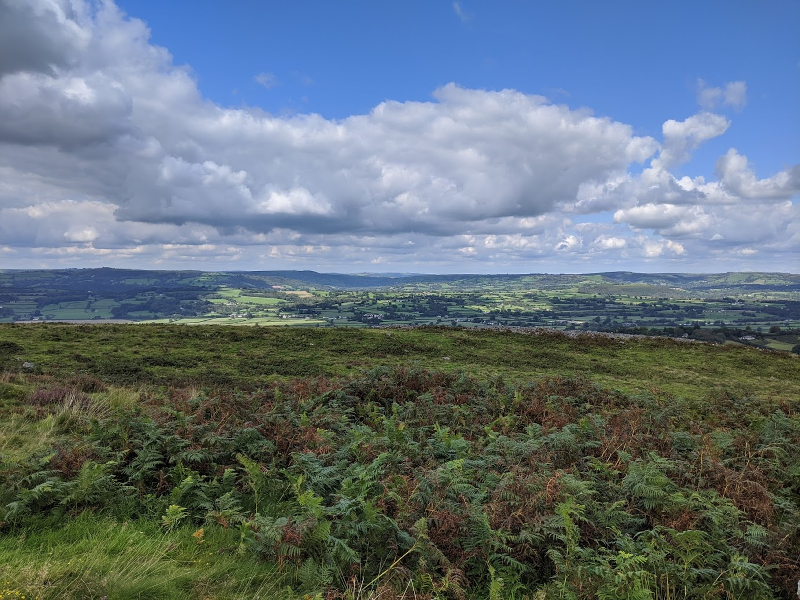
We haven't seen that many birds, and AB1's knee could do with a day off. Unfortunately, there's no chance of that, a hill-fort full of Meadow Pipit needs to be walked around (good views, constant Green Woodpecker yaffling from nearby woods), and by the time we've got there, well, we might as well visit the National Botanic Garden, a few miles further down the Towy valley. In a strange coincidence, the same attraction also hosts The British Bird of Prey Centre, I guess we'll have no choice but to go and have a look at that as well.
We arrive just in time for the early afternoon bird of prey show, and our mild misgivings about the zoo-like nature of raptor collections are destroyed instantaneously by giant birds of prey flying no more than a couple of feet over our heads. The commentary from the team looking after the birds is excellent, too. The interaction of the bigger birds of prey and local wild raptors was also great. During the show, a couple of nearby Buzzards decided that the presence of a Golden Eagle motivated them to become faraway Buzzards at some speed. Visiting the aviary afterwards, we followed the rapt stares of birds we'd just seen in the show to a wild Peregrine Falcon that was overflying.
Rather than try to describe how good the views were, let's say it with some photos.
